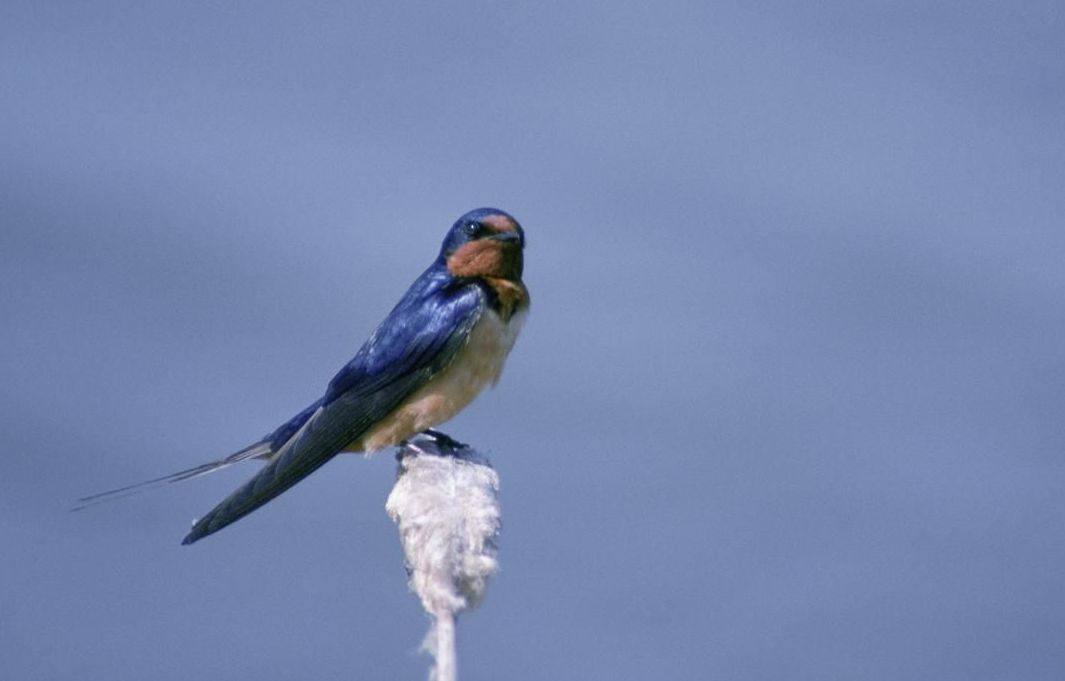Barn Swallow
(Hirundo rustica)
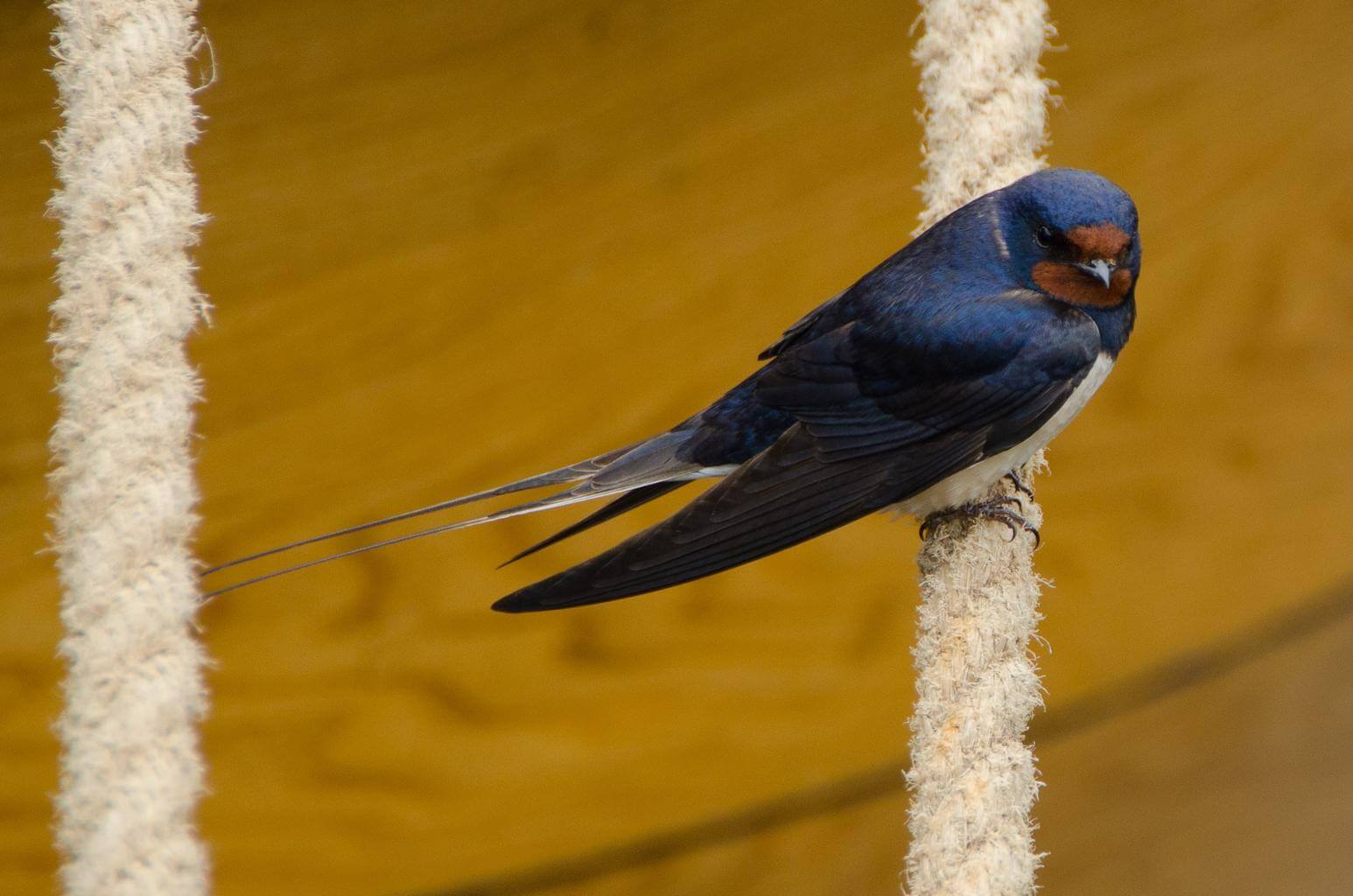
The Barn Swallow is the most widespread and distinctive of the swallows commonly found around humans. They are graceful flyers as they hunt insects around human habitations, and with their habit of building mud nests on buildings and the interiors of barns, most people are familiar with these birds. Other swallows have short tails, but Barn Swallows have elongated outer tail feathers, giving the tails a unique deeply-forked appearance.
Size: return to top
- Length: 6.7 inches
- Wingspan: 12.0 inches
- Weight: 0.65 oz.
How To Identify: return to top
Barn Swallows are dark blue on their back, wings, tail, and top of their head. Their forehead and throat are a rusty color. Their underparts range from a dark tan (North American birds) to almost white (European birds). Their wings are long and pointed, and they have a very deeply forked tail. Both sexes have the same color pattern, but the colors of the males are more intense, although this is difficult to see.
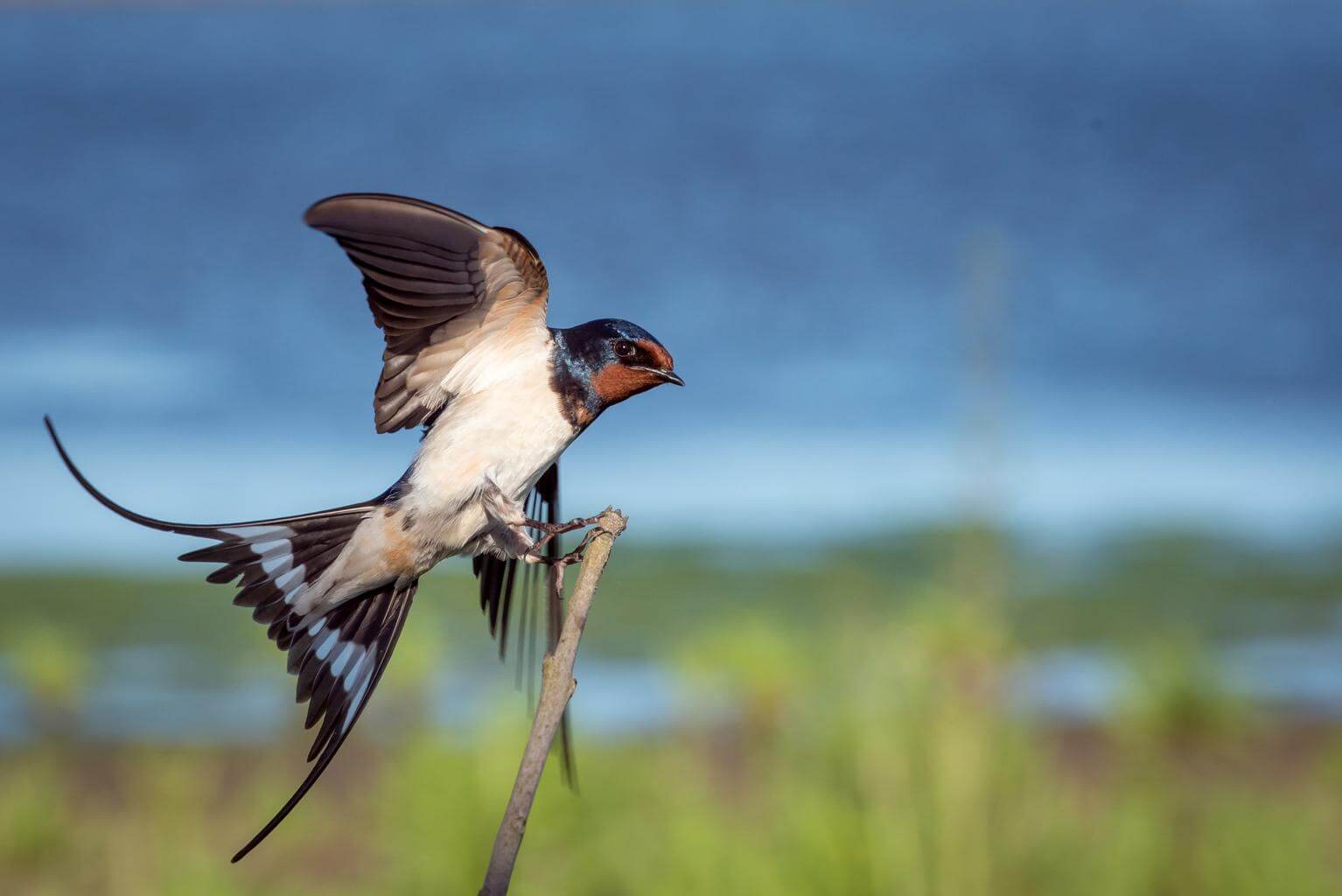 Barn Swallow showing the deeply forked tail and lighter underparts of European birds.
Barn Swallow showing the deeply forked tail and lighter underparts of European birds.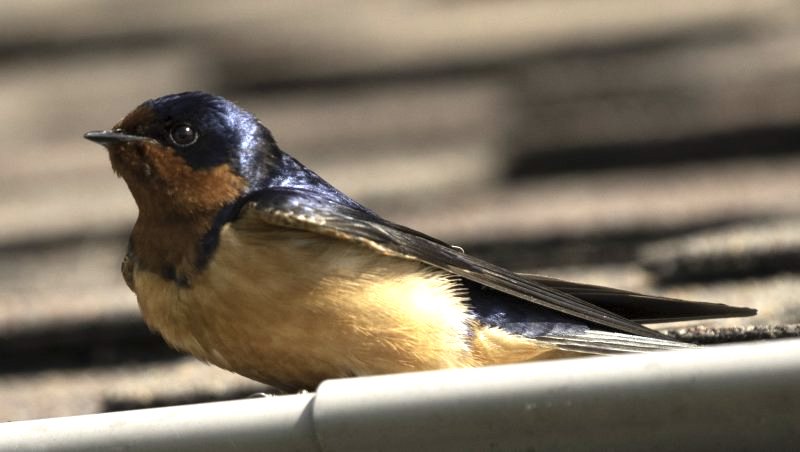 Barn Swallow showing the darker underparts of birds in North America.
Barn Swallow showing the darker underparts of birds in North America.When perched, Barn Swallows appear widest at the shoulders, with a strong tapered look to their tail, which is made more dramatic looking because of their long tail. This photo illustrates the tapered look.
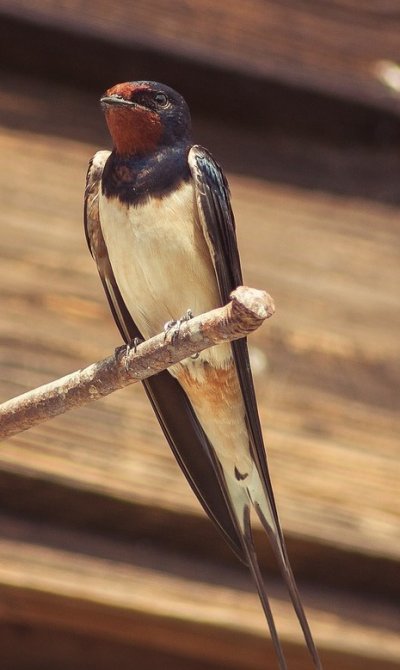
Range Map: return to top
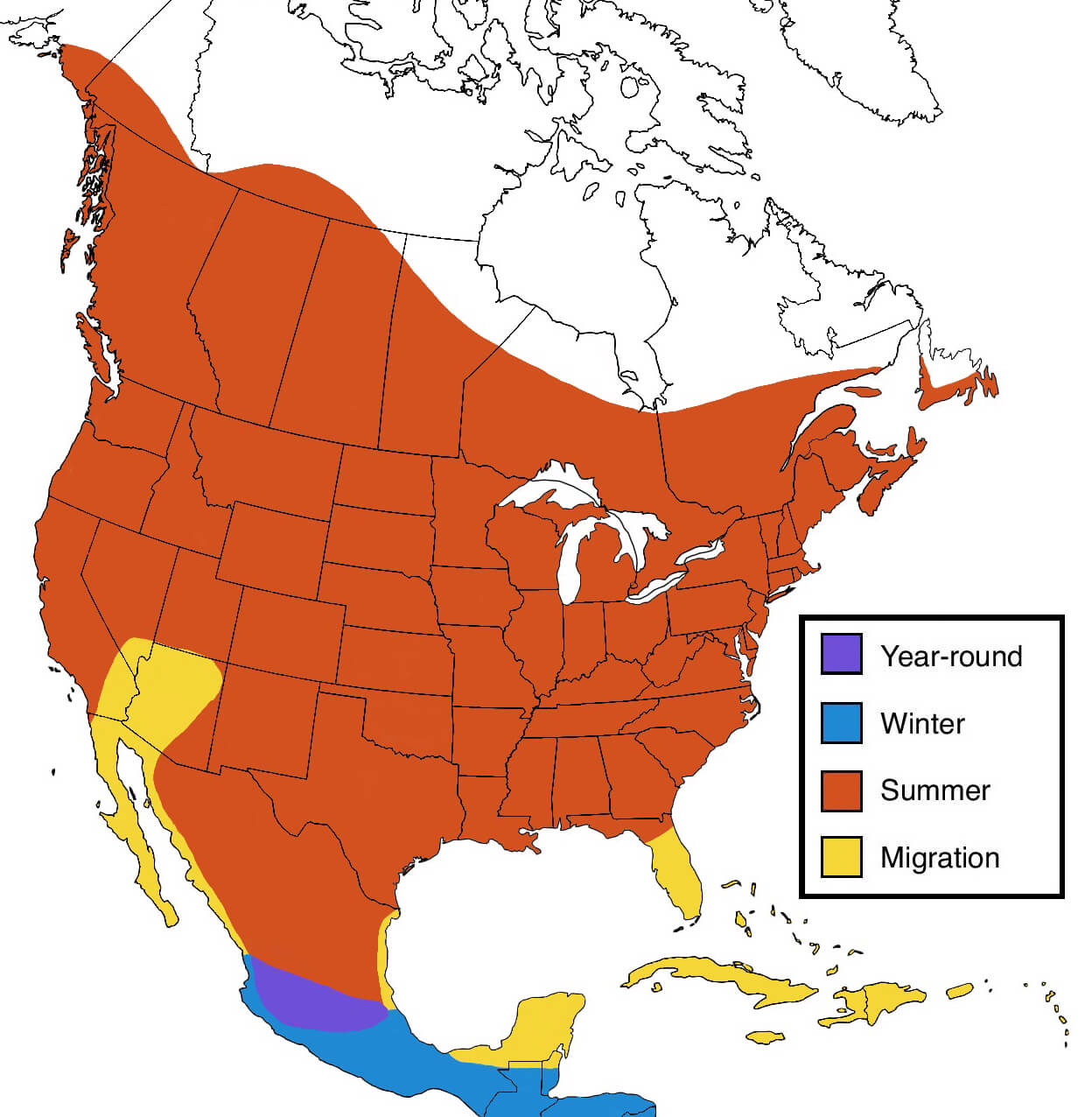
Similar Species: return to top
Cliff Swallow, Purple Martin, Tree Swallow, Violet-green Swallow, Bank Swallow, and Northern Rough-winged Swallow
The color pattern of the Barn Swallow differs from all the other swallows in North America, as shown in the head sketches below. The top of the head, the neck, and the back are all purplish, with a brownish forehead and throat. Contrast that with the color patterns of the others. Keep in mind that you will not often get looks as clear as these sketches. Often, all you'll see is a dark shape overhead. Below the head sketches are silhouettes of all the swallows as you might see them in the sky. Notice the deeply forked tail of the Barn Swallow. Only the Purple Martin's forked tail is even close to the Barn Swallow. And yes, you can see the narrow outer tail feathers of the Barn Swallow in flight if you look closely.
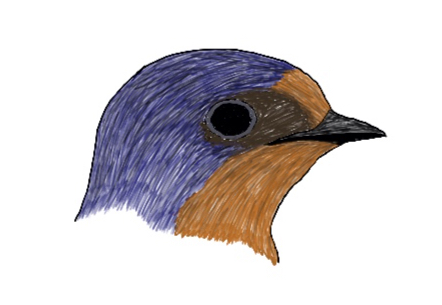 Barn Swallow Barn Swallow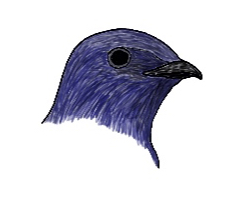 Purple Martin male Purple Martin male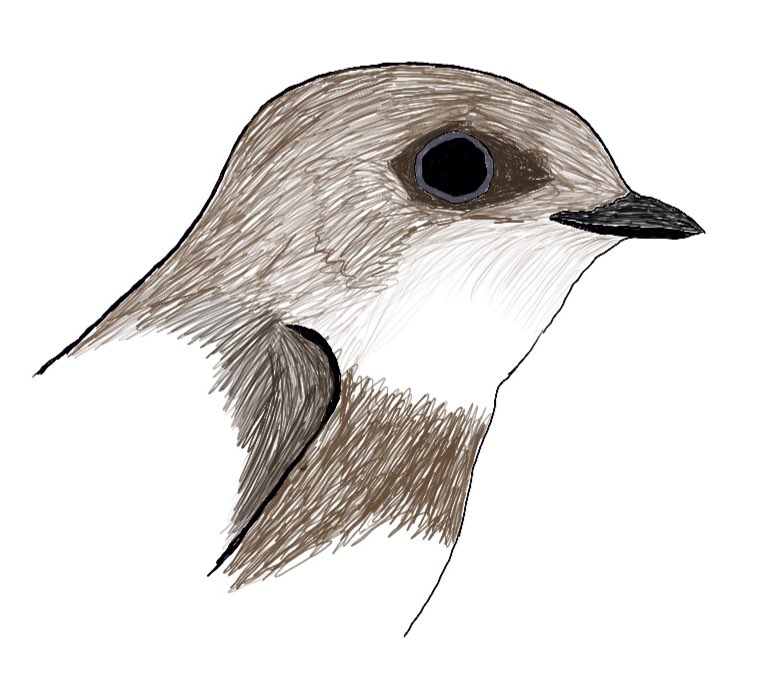 Bank Swallow Bank Swallow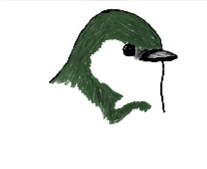 Violet-green Swallow Violet-green Swallow |
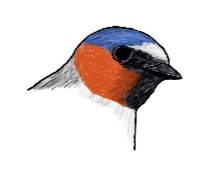 Cliff Swallow Cliff Swallow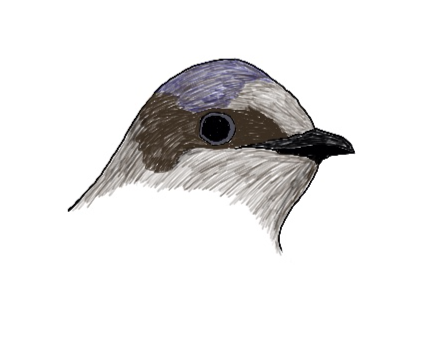 Purple Martin female Purple Martin female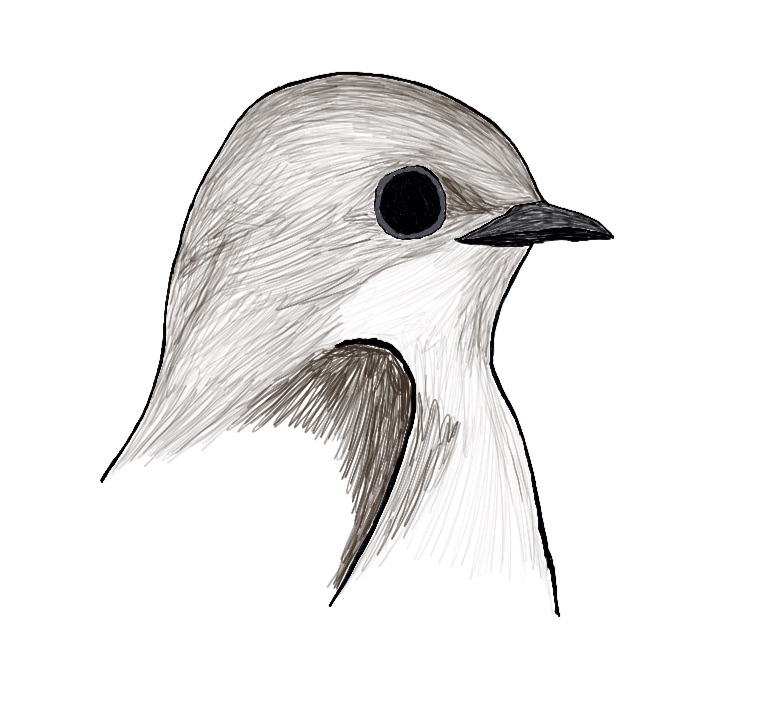 Northern Rough-winged Swallow Northern Rough-winged Swallow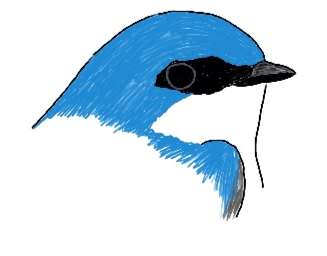 Tree Swallow Tree Swallow |
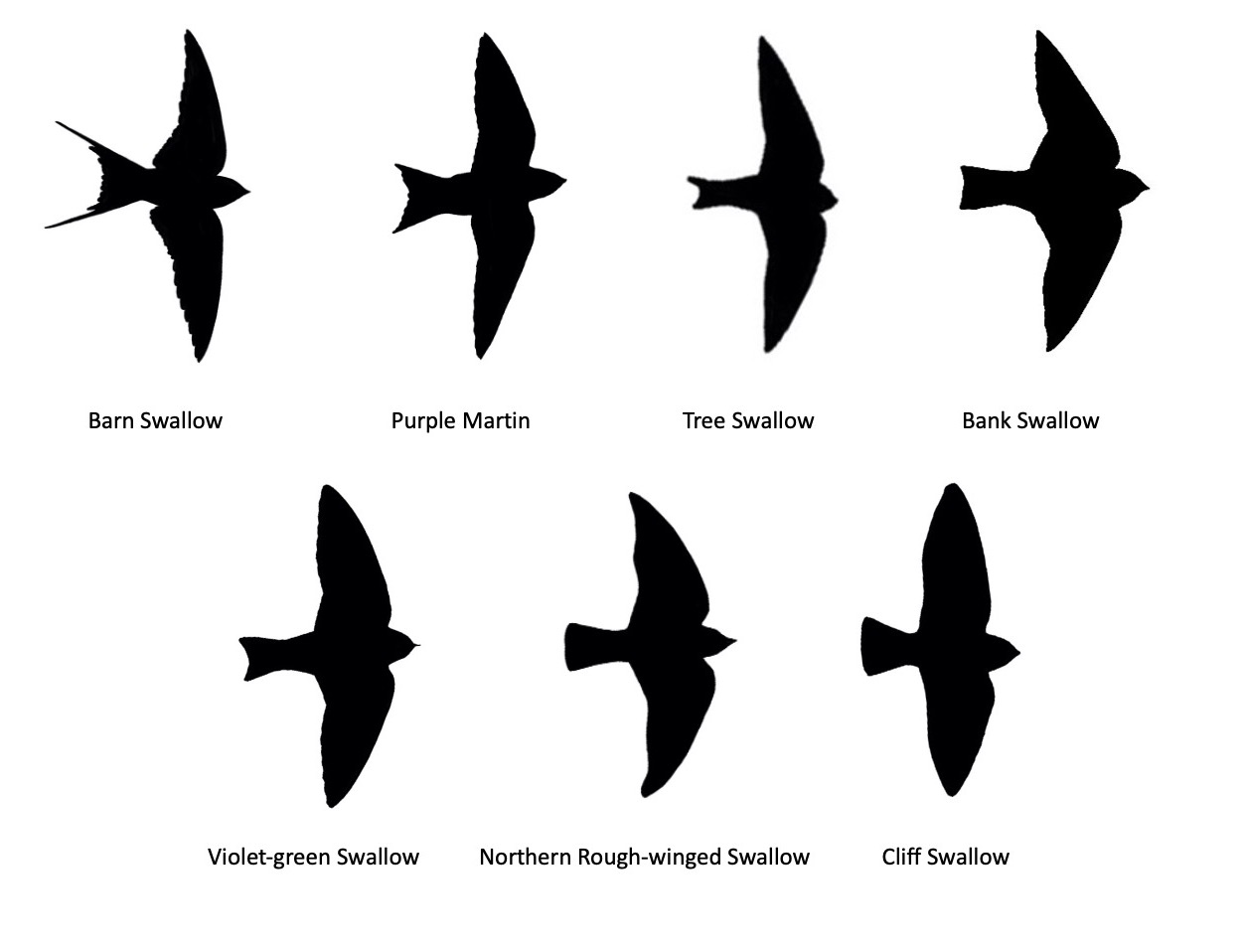
Chimney Swift, Vaux's Swift, White-throated Swift
None of the swifts have the deeply forked tail of the Barn Swallow. They are also a rather drab gray above with underparts ranging from whitish in the White-throated Swift to a lighter gray (Vaux's Swift), to a darker gray in the Chimney Swift.
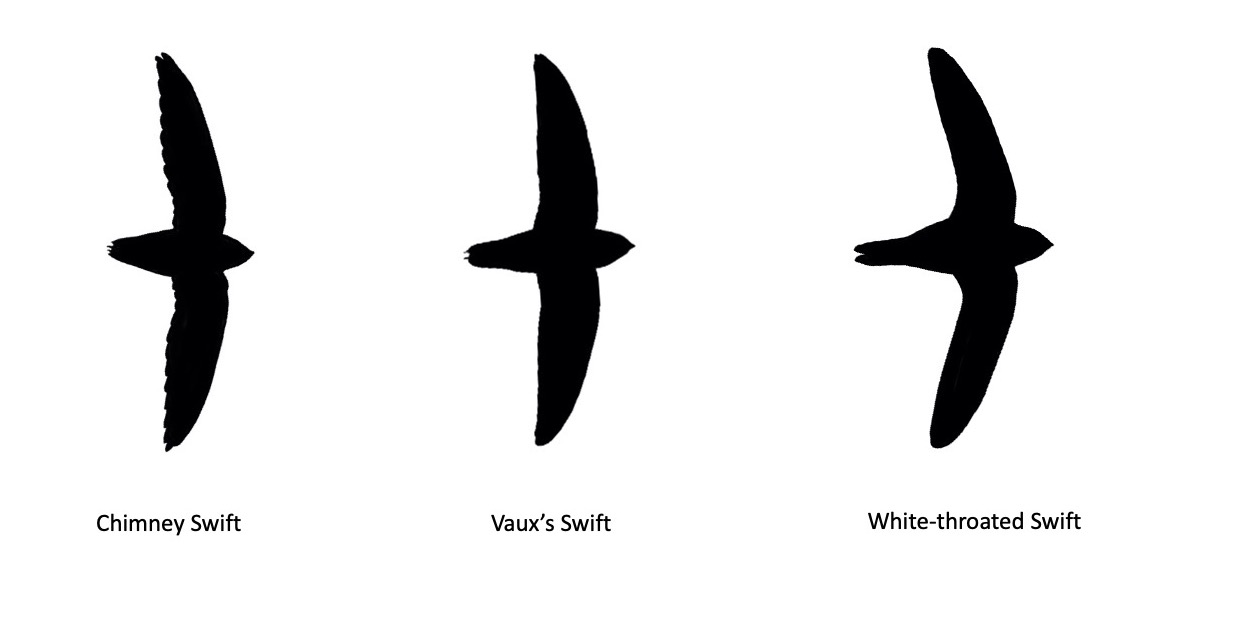
Habitat: return to top
Barn Swallows breed in areas that have three required components: buildings or cliffs for nests, mud for constructing their nests, and open areas to feed in. Outside of the breeding season, they can be found flying over open areas such as fields and lakes in search of flying insects for food. They can be quite common in urban and suburban areas.
Nesting: return to top
- Nest Type: open cup made of mud with straw mixed in; if built on vertical surface, then the nest is a half-cup (like the photo below), but if on a cross beam or rafter, then the nest is a full-cup
- Nest Location: nests built on a vertical surface like under the eaves of your house or the undersides of bridges and culverts, but also on top of rafters and cross beams in buildings like barns and sheds
- Clutch: 4-5 eggs (range 4-7)
- Incubation Period: 13-17 days
- Nestling Period: 18-23 days
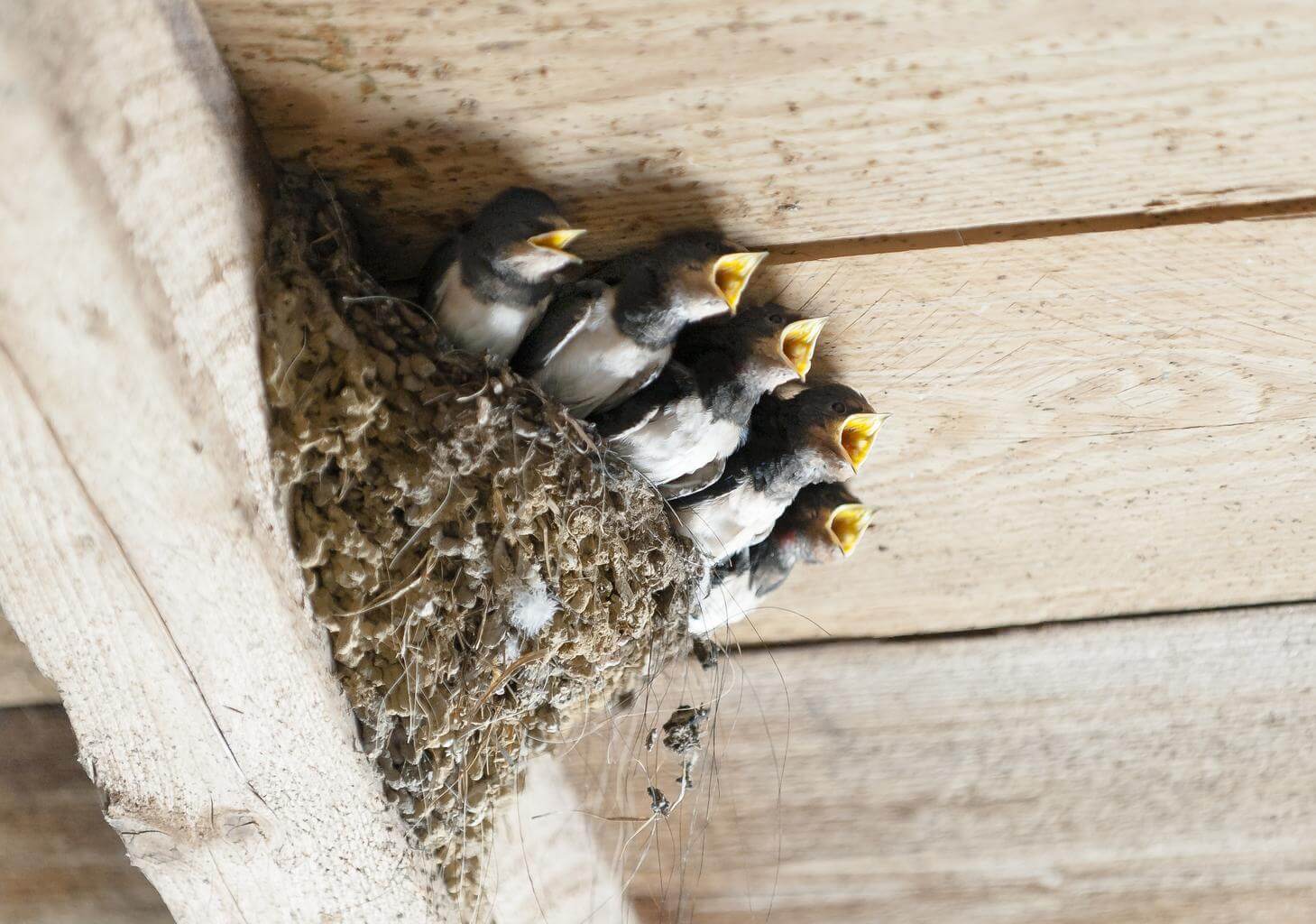
Diet: return to top
Barn Swallows eat flying insects which they catch while in flight. Flies seem to be preferred, but they will eat a wide variety of flying insects. They are also known to ingest sand and small pebbles.
